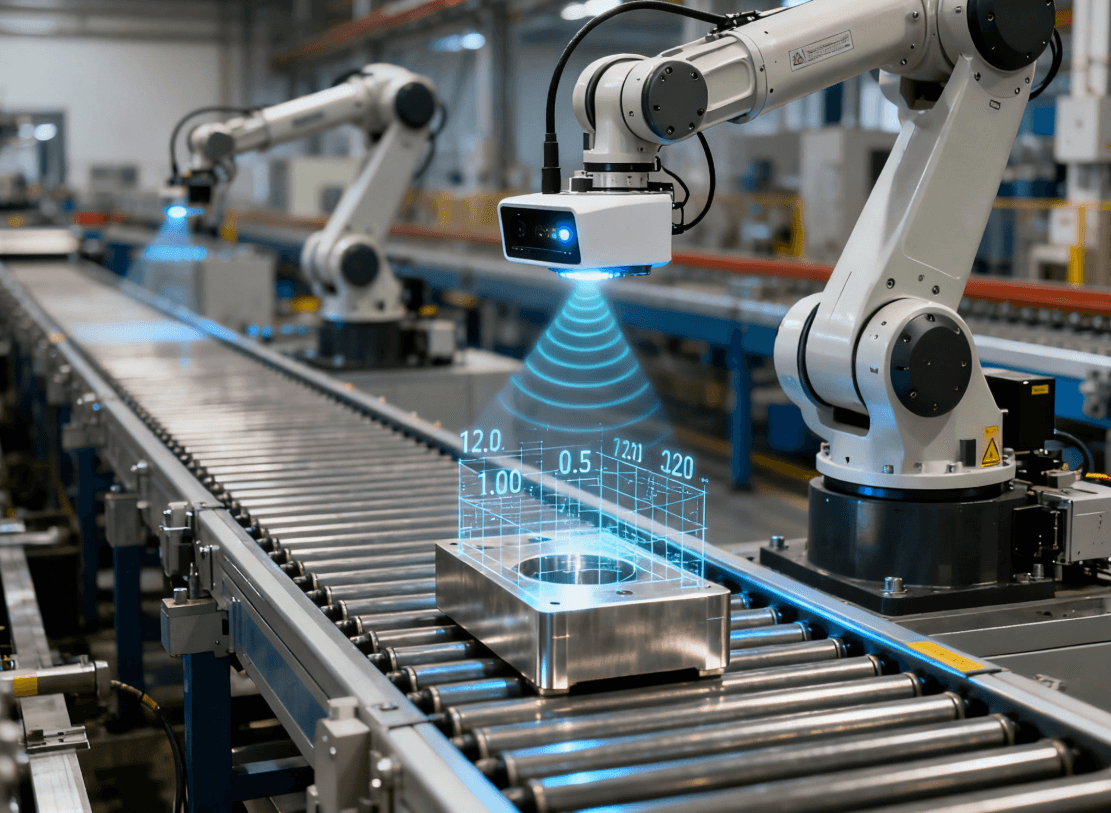Introduction: Precision Is Everything in Modern Industry
In today’s fast-paced industrial environment, precision and reliability are non-negotiable. Manufacturing lines, warehouse operations, and collaborative robot (cobot) workspaces all rely on sensors to monitor motion, track objects, and maintain safety. Even minor inaccuracies can cause costly downtime, production errors, or workplace accidents.
Traditionally, optical sensors, LiDAR, and ultrasonic devices have been the go-to solutions. Yet in real-world conditions—think dusty warehouses, welding smoke, dim lighting, or reflective surfaces—these systems often falter. Errors or blind spots can disrupt production and compromise safety.
This is where millimeter-wave (mmWave) radar makes a difference. With centimeter-level precision, immunity to environmental interference, and the ability to track multiple objects simultaneously, mmWave radar is redefining industrial sensing and automation.
1. How mmWave Radar Functions in Industrial Settings
mmWave radar operates in the 60–81 GHz frequency range, transmitting radio waves and analyzing reflections to calculate distance, velocity, and angle. But what really sets it apart in industrial contexts?
1.1 Thriving in Challenging Environments
Dust, smoke, and variable lighting often interfere with cameras or LiDAR. mmWave radar, however, sees through these obstacles, maintaining reliable detection in conditions that would blind other sensors. Whether on a factory floor or inside a warehouse with low-light corridors, radar provides consistent data for robots and machines to act upon.
1.2 Multi-Object Tracking
Industrial environments are dynamic: cobots, forklifts, AGVs, and human workers move simultaneously. Using FMCW (Frequency Modulated Continuous Wave) radar, systems can track multiple objects in three dimensions at the same time, preventing collisions and optimizing workflow.
1.3 Instantaneous Feedback
High-speed production lines cannot tolerate delays. Radar delivers millisecond-level updates, enabling robotic arms or AGVs to adjust trajectories instantly, whether it’s stopping a misaligned conveyor part or dodging an unexpected obstacle.
Learn more about mmWave radar principles in Linpowave’s technical insights.
2. Key Applications in Industrial Automation
2.1 Collaborative Robotics
Cobots share space with humans, so precise motion sensing is critical. Radar detects human movement, predicts trajectories, and adjusts robot paths accordingly. Unlike cameras, radar performance is unaffected by lighting conditions or visual clutter, ensuring safe and efficient collaboration.
2.2 Warehouse Automation
Automated Guided Vehicles (AGVs) navigate complex environments where humans, forklifts, and obstacles coexist. mmWave radar provides real-time obstacle detection, allowing AGVs to adjust speed or path safely. Dusty conditions, low light, or reflective floors—challenges for cameras—don’t impede radar performance.
2.3 High-Speed Manufacturing Lines
On fast-moving production lines, mmWave radar enables:
-
Accurate object counting: Every component is tracked, even at high speed
-
Presence detection: Ensures parts are positioned correctly for robotic pick-and-place operations
-
Motion monitoring: Detects irregular movements in machinery for predictive maintenance
Check Linpowave’s Industrial Radar Solutions for real-world implementations.
3. Integration with Existing Systems
3.1 Sensor Fusion
Radar is most effective when paired with other sensors. Cameras provide visual context and classification, while radar ensures precise distance and motion data, creating a holistic perception system capable of handling complex industrial environments.
3.2 AI and Advanced Signal Processing
Modern radar systems integrate AI algorithms to:
-
Filter noisy signals using Kalman filters
-
Identify multiple objects with clustering techniques
-
Predict motion trajectories with machine learning models
These capabilities allow robots and AGVs to make proactive decisions, improving safety and productivity.
3.3 Communication and Connectivity
Radar modules communicate through CAN, UART, or Ethernet, feeding low-latency data to industrial controllers. Real-time feedback enables dynamic workflow adjustment, predictive automation, and adaptive safety mechanisms.
4. Real-World Case Studies
4.1 Safe Collaboration Between Humans and Robots
A factory deploying Linpowave radar-equipped cobots observed:
-
Zero safety incidents over six months
-
12% reduction in downtime due to smoother operations
-
Seamless integration with human workers, even in congested areas
4.2 Optimized Warehouse Logistics
AGVs retrofitted with radar modules achieved:
-
98% detection accuracy in dusty or low-light conditions
-
15% faster travel times due to fewer emergency stops
-
Reliable navigation in challenging real-world warehouse environments
4.3 High-Speed Production Monitoring
On reflective conveyor lines, radar accurately tracked components and machinery movement:
-
20% reduction in errors
-
Improved robotic pick-and-place efficiency
-
Reduced downtime for maintenance intervention
These examples highlight radar’s ability to improve safety, efficiency, and reliability across industrial operations.
5. Addressing Challenges
5.1 Multi-Path Reflections
Metal surfaces can create false radar echoes. Advanced filtering and clustering algorithms distinguish true targets from spurious reflections, ensuring accurate detection.
5.2 Cost and Deployment Scalability
Deploying radar across multiple production lines can be expensive. Linpowave’s modular and compact radar units allow phased, cost-effective deployment without compromising performance.
5.3 Data Volume Management
High-frequency radar generates substantial data. AI analytics platforms process and interpret this information efficiently, producing actionable insights for predictive maintenance, workflow optimization, and real-time decision-making.
6. FAQ: mmWave Radar in Industrial Automation
Q1: How does mmWave radar outperform cameras or ultrasonic sensors?
A1: It maintains accuracy in dust, smoke, low light, and reflective environments, where cameras or ultrasonic sensors may fail.
Q2: Can it track multiple moving objects simultaneously?
A2: Yes, FMCW radar enables 3D multi-target tracking, essential for cobots, AGVs, and crowded production lines.
Q3: Is integration with existing industrial controllers feasible?
A3: Absolutely. Standard interfaces like CAN, UART, or Ethernet allow low-latency integration.
Q4: Which industrial applications benefit most?
A4:
-
Cobots in shared workspaces
-
AGVs in warehouses
-
High-speed production lines
-
Motion monitoring for logistics and quality control
Q5: Can AI enhance predictive motion control?
A5: Yes. AI analyzes radar data to forecast movements, prevent collisions, and optimize efficiency.
Conclusion: mmWave Radar—The Industrial Eye and Reflex
From collaborative robots to warehouse AGVs and high-speed production lines, mmWave radar delivers real-time, reliable, and precise sensing. By combining environmental robustness, multi-target tracking, and AI-driven analytics, industrial systems become safer, more efficient, and future-ready.
Explore more:



